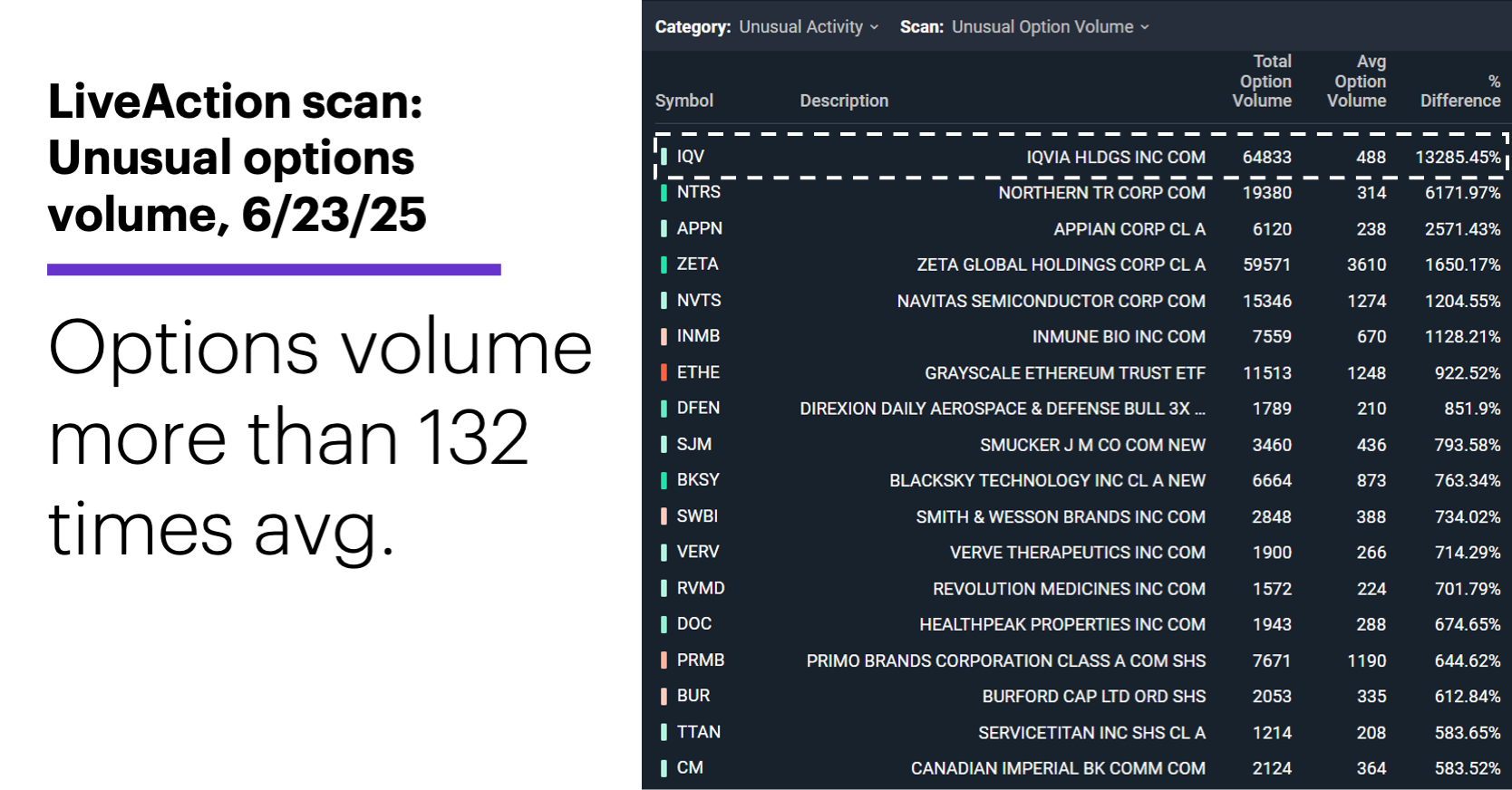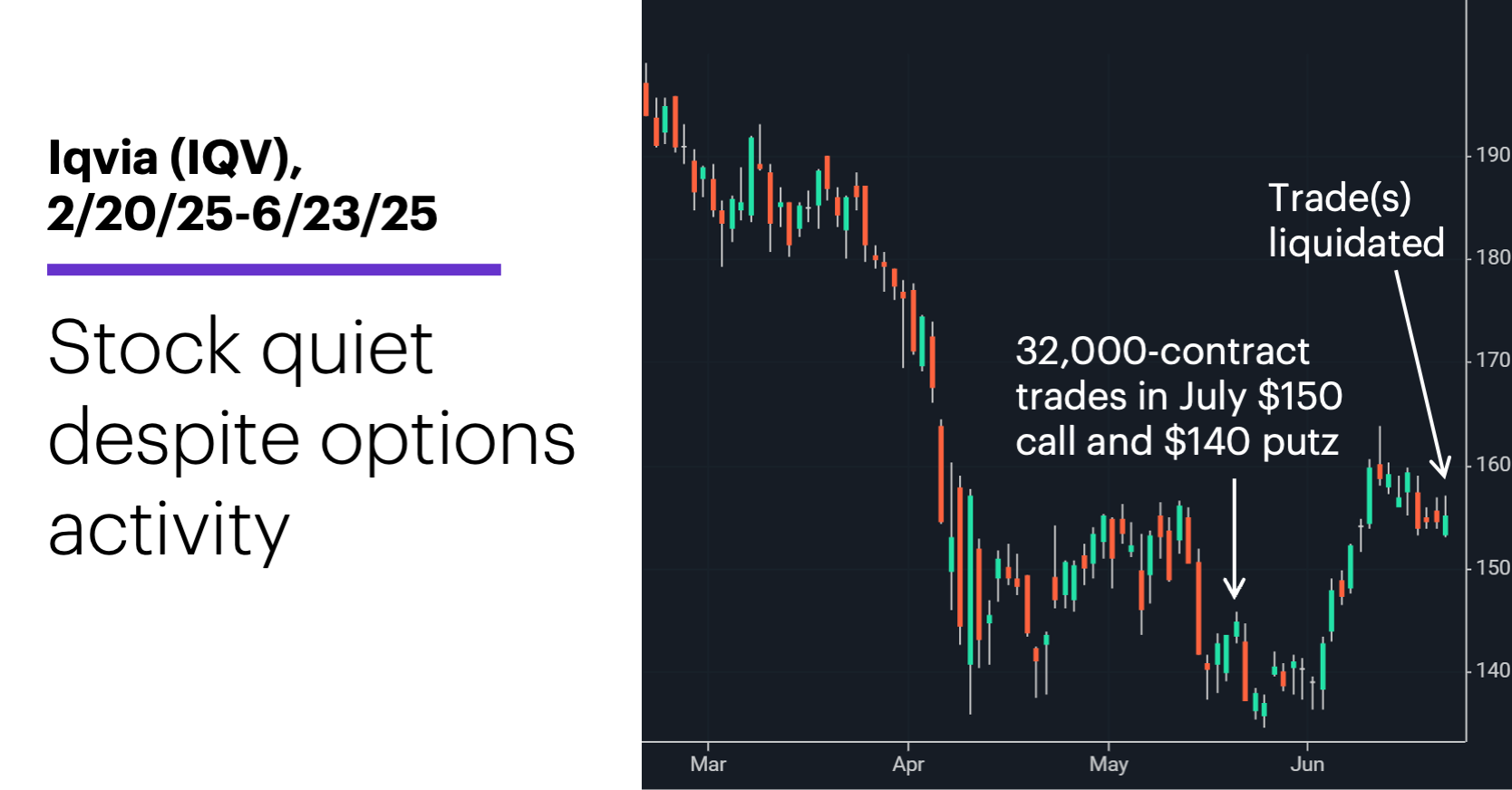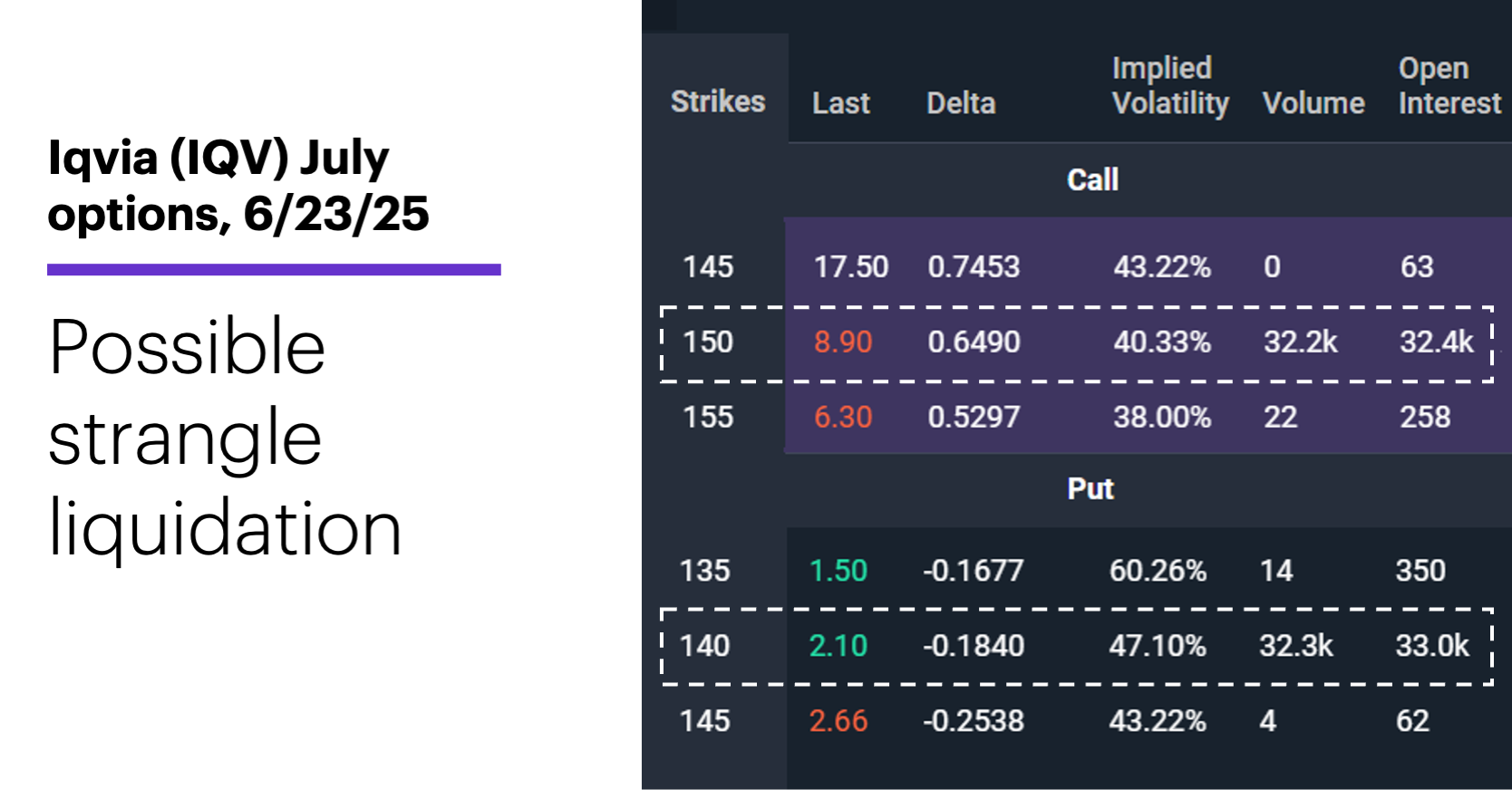Dissecting a volatility trade
- IQV had Monday’s highest relative options volume
- Stock in consolidation after bouncing off five-year low
- Short volatility strategy profitable over the past month
In early trading on Monday, health care diagnostics company Iqvia (IQV) was at the top of the LiveAction scan for high options volume, trading nearly 132 times its average number of contracts:

Source: Power E*TRADE. (For illustrative purposes. Not a recommendation.)
Unlike some of the other stocks near the top of the scan, such as Northern Trust (NTRS) and Zeta (ZETA), IQV didn’t make a particularly big move yesterday. It rallied 1.5% in early trading before slipping into negative intraday territory by late morning:

Source: Power E*TRADE. (For illustrative purposes. Not a recommendation.)
While unusual options activity and large stock moves don’t always go hand in hand, they often do—and for obvious reasons. The heavy options volume (mostly calls) in NTRS, for example, was accompanied by a 10.3% intraday jump in the stock following reports of merger discussions.1
Although there was no news about IQV crossing the wire, the options chain appeared to explain why the stock with the day’s highest relative options volume was doing so little:

Source: Power E*TRADE. (For illustrative purposes. Not a recommendation.)
Both the July $150 calls and July $140 puts had volume of roughly 32,000, and the fact that these contracts had open interest (OI) totals just a bit higher suggests two things:
1. The two trades could have been related.
2. Monday’s activity could have been a liquidation of existing positions.
First, it may be more accurate to say “existing position,” since same-sized trades in calls and puts can represent a “strangle,” an options strategy designed to profit from rising or declining volatility depending on whether a trader is long or short. A long straddle consists of simultaneously buying a higher-strike call option and a lower-strike put option. It’s a “long-volatility” trade: If the underlying stock moves enough (higher or lower) to offset the combined cost of the two options, the position can produce a profit.
The short strangle inverts this premise. The trader simultaneously sells both options, expecting the stock to move as little as possible—ideally, remaining between the two strike prices, in which case both options would expire worthless and the trader would get to keep all the premium collected from their sale.
In this case, a long strangle trader would have bought the $150 call and $140 put, while a short strangle trader would have sold both options. Both options’ price charts showed roughly 32,000-contract trades took place on May 20 (as noted on the IQV stock chart), supporting the idea that the trades represented a possible large strangle position. On May 20, the $150 call traded for $6.79 and the $140 put traded for $7.21, for a total long strangle cost of $14.
As of Monday morning, IQV shares were nearly 6% higher than they were on May 20, and the $150 call was trading for $10.36, a gain of $3.57. However, the $140 put was trading at $2.10, a loss of $5.11. That means the strangle posted a net decline of $1.54 ($5.11-$3.57). And while that may not sound like much of a change over the course of nearly five weeks, on a 32,000-contract position it comes out to $4,928,000—a profit if the trader shorted the strangle, and a loss if the trader went long.
The more important takeaway from this example may be that, if the trade was, in fact, initiated as a short position, the trader exited the position well before expiration and realized a profit even though the stock rallied above the call option’s strike price.
Market Mover Update: August WTI crude oil futures (CLQ5) rallied nearly 6% to a new intraday contract high of $78.40 in pre-market trading on Monday, then ended the day down more than 7% at $68.51 (see “Energy deck gets shuffled”).
Today’s numbers include (all times ET): Q1 current account (8:30 a.m.), S&P Case-Shiller Home Price Index (9 a.m.), FHFA House Price Index (9 a.m.), consumer confidence (10 a.m.), Jerome Powell congressional testimony (10 a.m.).
Today’s earnings include (all times ET): AeroVironment (AVAV), FedEx (FDX), National Beverage (FIZZ), Levi Strauss (LEVI), TD Synnex (SNX).
Click here to log on to your account or learn more about E*TRADE's trading platforms, or follow the Company on Twitter, @ETRADE, for useful trading and investing insights.
1 Barron’s. BNY, Northern Trust Discuss Merger: Report. Wall Street Says It Makes Sense. 6/23/25.